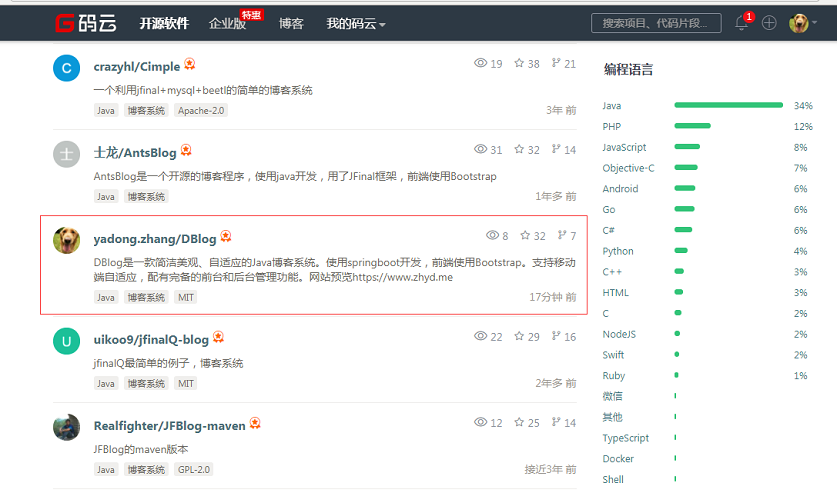SpringBoot项目实战(9):整合swagger2
前言
swagger Restful文档生成工具 2017-9-30
官方地址:https://swagger.io/docs/specification/about/
官方Github:https://github.com/swagger-api/swagger-core/wiki/Annotations
启动项目,访问http://localhost:8082/swagger-ui.html查看API
注意,此项目示例中,使用了三种ui依赖,每种依赖对应的访问页面不同:
springfox-swagger-ui -> http://localhost:8082/swagger-ui.html
swagger-bootstrap-ui -> http://localhost:8082/doc.html
swagger-ui-layer -> http://localhost:8082/docs.html
使用方法
1.添加依赖(springfox-swagger2依赖是必须的,三种ui依赖只需要使用一个就行)
<dependency>
<groupId>io.springfox</groupId>
<artifactId>springfox-swagger2</artifactId>
<version>2.2.2</version>
</dependency>
<dependency>
<groupId>io.springfox</groupId>
<artifactId>springfox-swagger-ui</artifactId>
<version>2.2.2</version>
</dependency>2.创建配置文件Swagger2Config.java
@EnableSwagger2
@Configuration
public class Swagger2Config {
@Bean
public Docket createRestApi() {
return new Docket(DocumentationType.SWAGGER_2)
.apiInfo(apiInfo())
.select()
//为当前包路径
.apis(RequestHandlerSelectors.basePackage("com.zyd.controller"))
.paths(PathSelectors.any())
.build();
}
//构建 api文档的详细信息函数
private ApiInfo apiInfo() {
return new ApiInfoBuilder()
//页面标题
.title("Spring Boot 测试使用 Swagger2 构建RESTful API")
.termsOfServiceUrl("http://localhost/")
//创建人
.contact("zhyd")
//版本号
.version("1.0")
//描述
.description("API 描述")
.build();
}
}注:@EnableSwagger2注解一定不要漏掉
3.编写文档
@RestController
@RequestMapping("/demo")
@Api(value = "测试Swagger2",description="简单的API")
public class UserController {
@ApiOperation(value = "创建用户", notes = "根据User对象创建用户")
@ApiImplicitParams({
@ApiImplicitParam(dataType = "java.lang.Long", name = "id", value = "id", required = true, paramType = "path"),
@ApiImplicitParam(dataType = "User", name = "user", value = "用户信息", required = true)
})
@ApiResponses({
@ApiResponse(code = 500, message = "接口异常"),
})
@RequestMapping(value = "/user/{id}", method = RequestMethod.POST)
public User insert(@PathVariable Long id, @RequestBody User user) {
System.out.println("id:" + id + ", user:" + user);
user.setId(id);
return user;
}
}注意:如果api文档只是针对开发人员使用的,就需要后台对v2/api-docs路径进行过滤,对非开发人员应该是不可见的。
自定义api页面
本例是使用的swagger-ui-layer主题(链接请见本文最后)。使用自定义api页面就不需要在pom中配置ui依赖了,详情查看static目录
api页面访问地址:http://localhost:8082/api.html
页面效果参考
swagger-ui.html

bootstrap-ui.html

layer-ui.html.html

layer-ui-custom.html

参考链接
swagger-ui-layer地址:https://github.com/caspar-chen/swagger-ui-layer
Swagger-Bootstrap-UI地址:https://github.com/xiaoymin/Swagger-Bootstrap-UI
git源码:https://github.com/zhangyd-c/springboot/tree/master/springboot-swagger
其他相关文章
- SpringBoot项目实战(8):四种读取properties文件的方式
- SpringBoot项目实战(7):过滤器、监听器
- SpringBoot项目实战(6):整合Log4j和Aop,实现简单的日志记录
- SpringBoot项目实战(5):集成分页插件
- SpringBoot项目实战(4):集成Mybatis
- SpringBoot项目实战(3):整合Freemark模板
- SpringBoot项目实战(2):集成SpringBoot
- SpringBoot项目实战(1):新建Maven项目
- SpringBoot整合Freemarker项目ftl中使用include的异常
- 本文标签: Spring Boot Java
- 本文链接: https://www.zhyd.me/article/73
- 版权声明: 本文由张亚东原创发布,转载请遵循《署名-非商业性使用-相同方式共享 4.0 国际 (CC BY-NC-SA 4.0)》许可协议授权













